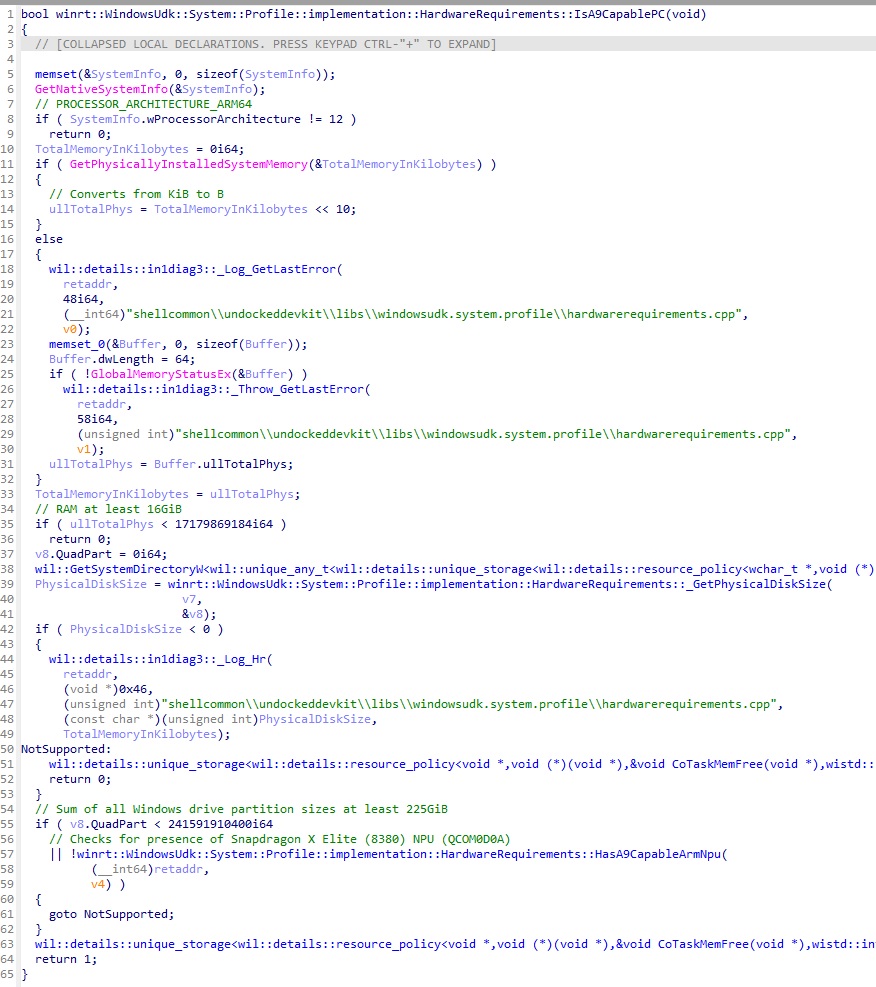You’ll need an ARM64 processor like the Snapdragon X Elite with NPU, 225GB of storage (SSD), and up to 16GB of RAM to use Windows 11 version 24H2’s highly anticipated “AI Explorer”. While Windows 11 24H2 and most of its new features will work on all PCs, you’ll need the new Snapdragon X Elite chip to try the “AI Explorer”.
So, what exactly is an AI Explorer, and why does it need Snapdragon X Elite to deliver on the promise? First and foremost, “AI Explorer” has nothing to do with File Explorer. Instead, it’s similar to the Windows 10 Timeline feature. It will try to log everything you do on your PC, such as your tasks, meetings, browsing history, and email, and make them searchable.
It could be similar to a personalized AI for your PC in many ways. The best part? It’ll work locally and won’t send your data to Microsoft (we hope). As a result, Microsoft plans to make the feature exclusive to powerful AI PCs, such as the Snapdragon X Elite.
Microsoft has already confirmed that 2024 will be the year of AI PCs. These PCs will pack an NPU that will take care of all the AI-based tasks on the device. Surface devices with Intel AI CPUs have already launched a few weeks back. However, a recent finding reveals that the much-hyped AI Explorer won’t be available for all PCs.
We already know that AI Explorer needs an NPU to work. Intel, AMD, and upcoming Snapdragon X Elite processors have that component, but that won’t be enough for all the AI features. In our tests, we observed that X Elite’s NPU beats all the rivals by a significant margin.
| Processor | NPU Power | Peak (with GPU/CPU) |
| Snapdragon X Elite | 45 TOPS | 75 TOPS |
| Intel Meteor Lake | 11 TOPS | 34 TOPS |
| AMD Ryzen Hawk Point | 16 TOPS | 38 TOPS |
Albacore’s recent post on X (formerly Twitter) also describes that the AI Explorer will only work on Snapdragon’s X Elite processors.
The researcher found a document in the Windows 11 Build 26100 listing all the requirements for the AI Explorer:
- An ARM64 processor
- Snapdragon X Elite 8380 with NPU (QCOM0D0A)
- 225 GB Storage
- 16 GB RAM

As shown in the above screenshot, AI Explorer code strings suggest it is designed to look for Snapdragon X Elite processor with the appropriate NPU ID. This could mean many users with newer hardware won’t be able to try the AI Explorer feature, including the] Intel Core Ultra or AMD Ryzen 7000/8000 series.
At the same time, tt’s possible this requirement would be limited to the initial launch of the device, and Microsoft will bring AI Explore to other NPU PCs at some point in future.
Microsoft is trying to highlight Snapdragon X Elite’s performance and present it as the best choice for an AI PC.
Multiple OEMs have confirmed their upcoming PC lineup powered by the Snapdragon X Elite, making them worthy of the Windows 11 24H2’s “AI Explorer” feature.

Microsoft also plans to release the consumer editions of already released Surface devices with Qualcomm’s AI processor.
Another interesting requirement revealed in the list of requirements is the minimum RAM size. 16 GB will become the new norm for AI PCs capable of running all the upcoming Windows 11 features.
AI Explorer will remain exclusive for Snapdragon PCs
Albarcore’s finding highlights Microsoft’s intent to slowly transition users to ARM PCs (which it touts as the future of computing).
Microsoft is hopeful that most of the new PCs in the market will debut with an NPU chip, and contribute to the OS growth in the long run.
The adoption rate of Windows 11 is currently lower than expected by Microsoft. It may take some time for the AI-powered PC wave to gain momentum.





















